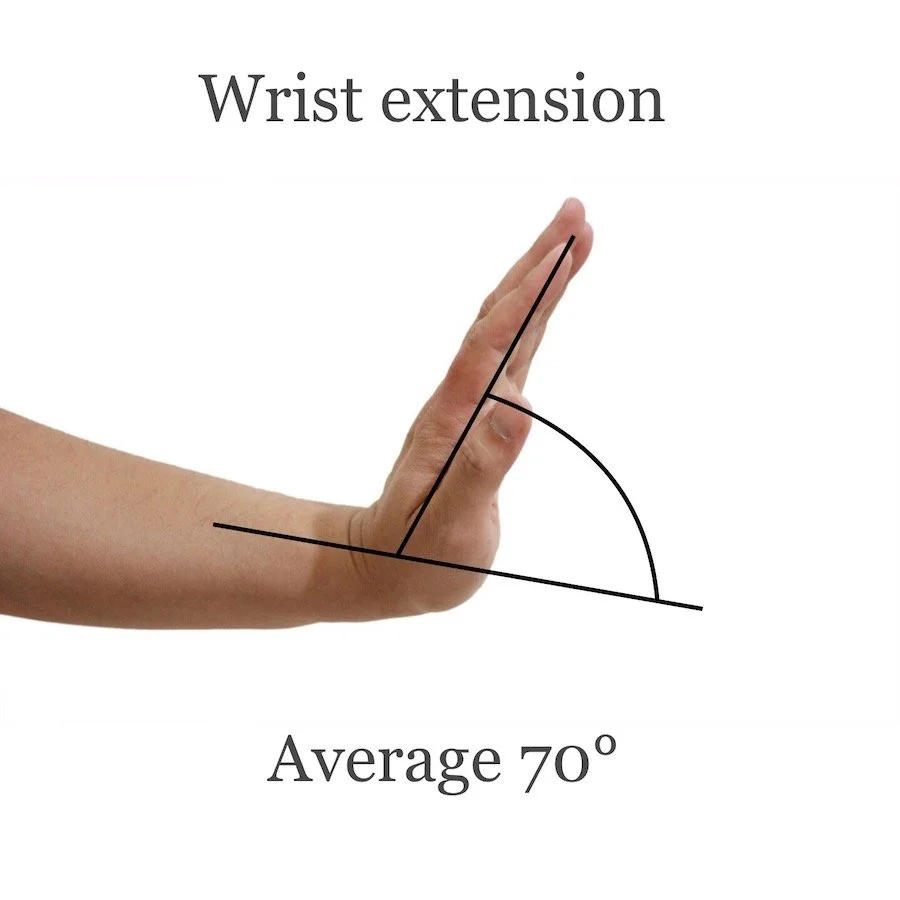There is so often a lot of dogma associated with Plank Pose. Many teachers tell their students exactly where to place their hands and exactly where to place their shoulders. But when you scratch the surface and look at the anatomy of the wrist and the arm it becomes clear that precise cues will not work for most yoga students.
Let’s start by looking at the fixation with wrists always being under the shoulders. Stacking joints in the vertical plane utilises the strength of the long bones, just like a pillar holding up a roof. This can make a pose more sustainable in a sense because it will take less muscular energy to stay there. But what about the wrist joint? It is not uncommon for students to complain that their wrists are uncomfortable in weight bearing positions.
In Plank Pose the wrist joints are in extension. The average active range of movement here is around 70°. But if the only option given to students is “shoulders above wrists” then the wrist joints will always be at 90° of extension. This means that students will spend a lot of time in a passive wrist position. They are relying on their body weight to hold them at that extra 20°of wrist extension. While passive movements are not “bad” per se, if we only ever move the wrist joints passively in our yoga practice, we are missing a great opportunity to strengthen them.
Offering the option to place the wrists slightly in front of the shoulders will feel more comfortable for many students.
Let’s now explore the popular cue “Place your hands shoulder-width apart”. Take a look at your elbow joints for a moment as they move through flexion and extension. Notice that the joints are slightly oblique, resulting in your hands being positioned away from your body when your elbows are extended but towards the midline when your elbows are flexed. The angle between the axis of the forearm and the axis of the humerus when the elbow is extended is known as the ‘carrying angle’. This angle essentially prevents us from hitting our hands against our legs as we walk and swing our arms. The hand moving towards the midline when the elbow flexes allows us to easily direct the hand towards our face. The carrying angle typically ranges between 11° and 16°.
If we transition into Chaturanga Dandasana with our hands directly underneath our shoulders, our elbows will naturally leave the sides of our torso because of the carrying angle. As we attempt to hug them back in, the latissimus dorsi and pectoralis major are activated which in turn internally rotate the shoulder joints. This isn’t necessarily a bad thing, but most teachers don’t like to see this! So, I recommend that you either try to place your hands wider than shoulder-width before transitioning into Chaturanga, or just stop worrying so much about your elbows leaving the sides of your waist during the transition.
Here is a short wrist joint mobility practice for you to try:

